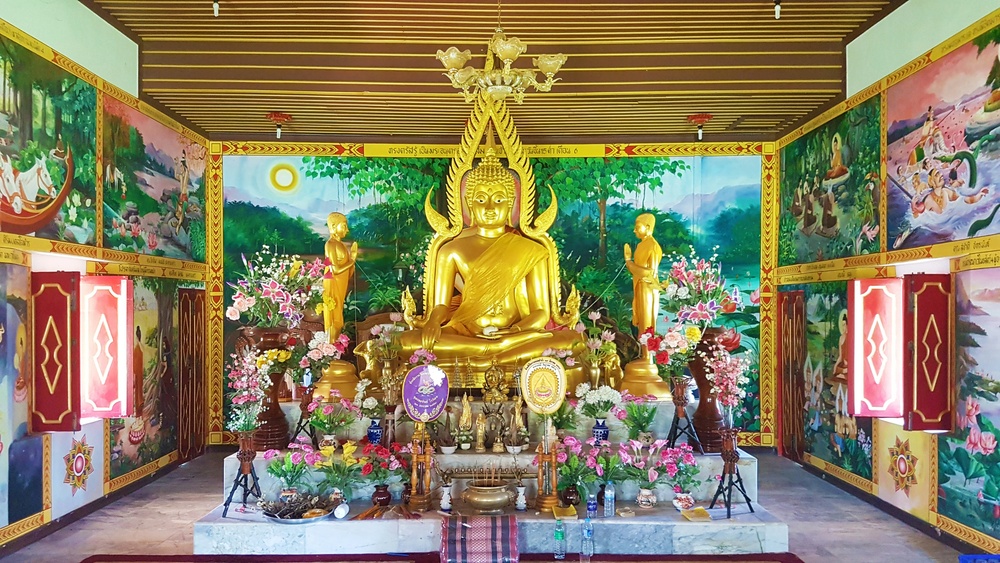India, the birthplace of Buddhism, is home to several sacred sites that attract millions of pilgrims and travellers every year. These destinations are not just religious landmarks but also cultural and historical treasures that reflect the life and teachings of the Buddha. If you are planning a spiritual journey, here is a complete guide to popular Buddhist destinations in India that you must include in your itinerary.
1. Bodh Gaya, Bihar
Bodh Gaya is the most significant among the popular Buddhist destinations in India. It was here under the Bodhi Tree that Prince Siddhartha attained enlightenment and became the Buddha. The Mahabodhi Temple, a UNESCO World Heritage Site, stands as a symbol of this divine transformation. Pilgrims meditate under the Bodhi Tree, visit the Vajrasana (Diamond Throne), and explore monasteries built by Buddhist nations like Thailand, Japan, and Bhutan. Visiting Bodh Gaya is a life-changing experience for any spiritual seeker.
2. Sarnath, Uttar Pradesh
Sarnath, near Varanasi, is the site where Buddha gave his first sermon after enlightenment, setting the Wheel of Dharma in motion. The Dhamek Stupa, built by Emperor Ashoka, marks the exact spot of the sermon. The Sarnath Museum houses the famous Ashoka Lion Capital, now India’s national emblem, along with other ancient Buddhist sculptures and artefacts. The peaceful gardens and ruins of monasteries make it a serene destination for reflection and learning.
3. Kushinagar, Uttar Pradesh
Kushinagar is one of the most revered popular Buddhist destinations in India as it is believed to be the place where Buddha attained Mahaparinirvana (final liberation). The Mahaparinirvana Temple houses a large reclining statue of Buddha depicting his peaceful passing. The site is surrounded by ancient stupas and ruins from the Gupta period, providing a glimpse into the historical significance of this sacred land.
4. Rajgir, Bihar
Rajgir was an important city during Buddha’s time and holds great significance in Buddhism. Buddha spent many years here and delivered several important sermons. Gridhakuta Hill (Vulture’s Peak) is where he gave teachings to his disciples. The Japanese-built Vishwa Shanti Stupa on Ratnagiri Hill adds to the spiritual aura of the place. Rajgir also has hot springs, believed to have medicinal properties, making it an ideal spot for both spiritual and physical rejuvenation.
5. Nalanda, Bihar
Close to Rajgir is Nalanda, famous for the ruins of Nalanda University, an ancient centre of Buddhist learning that attracted students from across Asia. The site has remnants of monasteries, temples, and stupas that reflect its glorious past. The Nalanda Archaeological Museum houses artefacts excavated from the site, including sculptures, inscriptions, and coins. Visiting Nalanda offers insights into the spread of Buddhist philosophy and education during its peak.
6. Shravasti, Uttar Pradesh
Shravasti is where Buddha spent 24 rainy seasons meditating and preaching. Jetavana Monastery, the main attraction here, houses the Anandabodhi Tree and the Gandhakuti (Buddha’s hut). The ruins of ancient stupas and monasteries scattered across Shravasti narrate stories from Buddha’s life, making it a peaceful destination for pilgrims and travellers seeking spiritual solitude.
7. Sanchi, Madhya Pradesh
Though Buddha never visited Sanchi, it remains one of the popular Buddhist destinations in India due to the grand stupas built by Emperor Ashoka in the 3rd century BCE. The Great Stupa at Sanchi, with its intricately carved gateways depicting scenes from Buddha’s life and Jataka tales, is a UNESCO World Heritage Site and a masterpiece of Buddhist art and architecture.
8. Tawang, Arunachal Pradesh
Tawang is home to the famous Tawang Monastery, India’s largest and the world’s second-largest monastery. It belongs to the Gelugpa sect of Tibetan Buddhism and houses ancient scriptures, thangkas, and a giant Buddha statue. The monastery, set amidst the breathtaking landscapes of Arunachal Pradesh, is a perfect destination for spiritual retreats and exploring Himalayan Buddhist culture.
9. Dharamshala and McLeodganj, Himachal Pradesh
Dharamshala, especially McLeodganj, is known as the residence of His Holiness the Dalai Lama and the Tibetan government-in-exile. The Tsuglagkhang Complex, Namgyal Monastery, and Tibetan Museum attract Buddhist followers and travellers who wish to understand Tibetan Buddhism, culture, and their struggle for identity.
10. Amaravati, Andhra Pradesh
Amaravati, situated on the banks of the Krishna River, was once a major Buddhist centre. The Amaravati Stupa, also known as Mahachaitya, is an ancient structure that dates back to the 2nd century BCE. The site is adorned with beautiful carvings depicting scenes from Buddha’s life and is an important destination for historians and pilgrims alike.
Best Time to Visit
The ideal time to visit these popular Buddhist destinations in India is between October and March when the weather is pleasant, making your spiritual journey comfortable. Visiting during Buddha Purnima offers a chance to witness grand celebrations and rituals at these sites.
Conclusion
These popular Buddhist destinations in India offer more than just historical and religious significance; they provide a path to inner peace, mindfulness, and understanding the timeless teachings of the Buddha. Whether you are a pilgrim seeking spiritual awakening or a traveller exploring India’s cultural heritage, these destinations will enrich your journey with wisdom, serenity, and inspiration.

